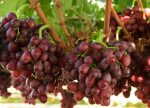Having generally taken stakes of only up to 10% in the first wave of upstream oil exploration projects, Namibia, through the National Petroleum Corporation of Namibia (NAMCOR), is now looking to increase its stake to possibly 20 or even 30% in the near future, Business Express understands.
This comes at a time when Namibia’s upstream oil and gas exploration has been somewhat derisked via major exploration and drilling campaigns that have been undertaken by oil majors in the couple of years that have confirmed the presence of hydrocarbons in Namibia’s orange basin.
NAMCOR’s interim managing director, Ebson Uangauta, was recently quoted by Energy Intelligence confirming plans to increase stakes while at the same time affirming that this will be done to future contracts and not existing contracts that will remain unchanged.
“NAMCOR is seeking a partner for its Orange Basin licenses PEL 67, PEL 72, PEL 79, and PEL 102,” Uangatu was quoted saying.
Namibia, which has no oil and gas production, has attracted huge interest from international energy companies in recent years after a string of discoveries by TotalEnergies, Shell, and Galp.
“It is important to note that the 10% participating interest held by the state through NAMCOR is a carried interest, which means the state is not required to provide funds for the exploration and development phase, which could run into billions of dollars. Full financial and operational risk is carried by the International Oil Companies (IOCs), who are at risk of losing investments running into billions of dollars if operations fail. The lOCs have the balance sheet and experience to either take the funding risk and/or to avoid significant loss of investment, the impact of which a country’s economy is not naturally designed to withstand,” the Ministry of Mines and Energy said earlier this year while justifying the current shareholding of 10%.
“Significant funds invested by the IOCs will only be recovered after several years of production (if any), while the state will start to receive royalty, tax, and profit oil upon the commencement of production. The state is also able to ensure that its profit from oil increases as oil price and production increase through contract mechanisms,” added the ministry.
LUCRATIVE UPSTREAM
Several significant oil and gas discoveries were made recently in Namibian waters, with supermajors with first production expected in 2030.
No company has decided to go ahead yet with a field development, though TotalEnergies said it expects to make a decision by the end of the year.
The strong interest in developing a new basin highlights the sector’s expectations for oil and gas demand to remain strong for years even as the world seeks to reduce its dependency on fossil fuels.
Exploration of Namibia’s Upper and Lower Cretaceous plays in the offshore Orange Basin has delivered nearly 5 Bbbl from nine wells since 2022, according to Westwood Global Energy Group.
The seven exploration wells that followed up the Graff and Venus play opening discoveries have resulted in four follow-on discoveries with an estimated recoverable oil resource of 2.8 Bbbl, said Teresa Wilkie, director of Westwood’s RigLogix service.
This includes Galp Energia’s Mopane discoveries earlier this year. If the estimated 2.4 Bbbl is confirmed, it would be the largest oil discovery in sub-Saharan Africa and the third largest globally over the last decade.
Notably, Namibia has ambitions to become one of the largest oil producers in Africa by 2035, with an average output of half a million barrels daily, displacing Egypt in the top five list.
MORE DRILLING IN THE ORANGE BASIN
A drillship that was operationally active in the Baleine offshore exploration area off the coast of Côte d’Ivoire last week arrived off the coast of Namibia in preparation for intended single-well drilling by Portuguese energy multinational Galp Energia.
The Santorini, owned by Italian oilfield services company Saipem SpA, is part of an investment of N$2.1 billion by Galp following exploratory drilling in January 2023.
Currently staged off Long Beach between Walvis Bay and Swakopmund, the Santorini will be used for ultra-deep drilling in the potentially inclement conditions Namibia’s southern sea is known for.
What sets the Santorini apart from other drill rigs is its large payload capacity, minimising land-based supply-trip maintenance.
Galp commenced drilling operations at the Mopane-1X well, which forms part of the Orange Basin that lies across the border with South Africa, followed by the Mopane-2X well in March 2023.










